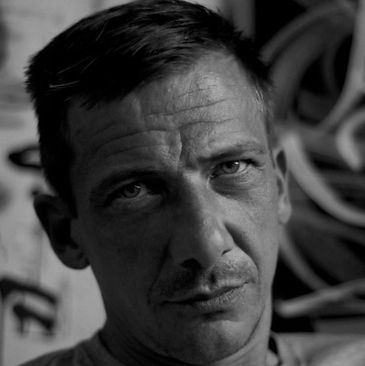
SOKLAK
Born in Paris in 1977, Soklak's artistic career has been marked by a bold fusion of graffiti, calligraphy and abstraction.
In 1986, the young Soklak experienced his first artistic marvel when he discovered the graffiti coloring the corridors and carriages of the Paris metro. He was instantly struck by the energy emanating from certain signatures and the freedom of gesture that characterizes them. A few years later, in 1993, Soklak took his first steps into the world of graffiti by tagging the streets of his suburb, then immersed himself in writing and street painting for several years. In 1995, Soklak naturally followed his passion by enrolling in a graphic arts school, graduating in 1998.
Soklak gradually redirected his attention to creating more elaborate frescoes, often nestled in the wastelands and industrial wastelands characteristic of the Paris suburbs. However, in 2002, feeling the need to create on a daily basis, Soklak turned to canvas. The limited size of this new medium, though constraining at first, proved to be a springboard for new artistic explorations. Soklak abandons the classic codes of graffiti art, while retaining the spontaneity, energy and freedom of gesture. Inspired by the great calligraphers, Soklak is passionate about the art of writing and incorporates calligraphic elements from Hebrew, Arabic, Egyptian and Asian alphabets into his work. He marries the codes of graffiti with the varied currents of calligraphy, creating a balance between tradition and urban modernism.
In 2015, Soklak was invited to join the Calligraffiti collective, bringing together rising talents in contemporary calligraphy from around the world. In 2020, Soklak further explores abstraction by removing the presence of letters from his canvases, moving towards abstract expressionism and lyrical abstraction. His work takes on a new dimension, reminiscent of Georges Mathieu's canvases, punctuated by splashes, splatters and drips. This movement, free of constraints and classical artistic codes, harks back to his roots in graffiti, which he continues to practice in parallel on walls.
ARTWORKS
EXHIBITIONS






PRESS

























